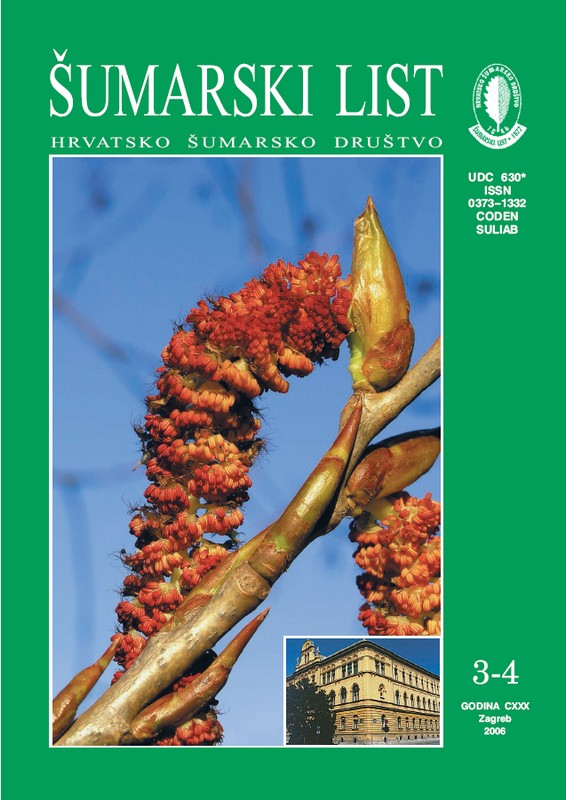
broj: 3-4/2006
pdf (21,2 MB) |
|
||||||||||||||
| IZVORNI ZNANSTVENI ČLANCI | ||
| PETREŠ, Stjepan | UDK 630* 461 + 375 (001) | |
| Damages on the Young Plants During the Timber Extraction by Cable Skidder LKT 81 T from the Final Cut of Pedunculate Oak pdf HR EN | 87 | |
| Summary: The aim of this paper was to determine and explain the relations and processes that cause damaging of the young plants during the extraction of timber by cable skidders from the final cut of pedunculate oak forests. Test plot was set in subcompartment 1a of “Žabarski bok” management unit, which represents the conditions for timber logging from lowland pedunculate oak forests. Skidding of roundwoood was preformed by the LKT 81 T cable skidder equipped with two-drum winch. Before the works started there was a total of 29 371 plants (up to 5 years old) on the 1 hectar large test plot, of wich 3.5 % grew on the skid trail. During the logging, 1 982 pedunculate oak plants were partially or completely damaged, which is equal to 6.75 % of the total number of plants. The majority of damages, based on the number of damaged plants as well as the severity of their damages, were inflicted during the winching of roundwood and skidding of load along the skid trail. Analysis based on the cause and type of damage has shown that during the winching of roundwood, majority of plants was damaged by the front end of the log (82.49 %). All the plants that grew on the skid trail (3.5 % of total number of plants counted before the logging started) were destroyed by numerous passes of the skidder. It was also determined that the lengths and diameters of the roundwood which caused damages were significantly larger than the average values for logs that didn’t cause any damage to young pedunculate oak plants. Number of damaged plants grows with the increase in diameters of the winched logs, and with their winching distance. Based on the obtained results, and with the purpose of reducing the damaging of young plants during the skidding of roundwood from final fellings in pedunculate oak forests by using the cable skidders to the least possible amount, the following is recommended: limitation of skidders’ movement to skid trails 100 meters apart from each other, directed felling of trees towards the skid trail and stem lenght harvesting method (half-stem lenght harvesting method in cases of borderline loads). Key words: damages on the young plants; final cut; pedunculate oak; skidder | ||
| Idžojtić, M., M. Glavaš, M. Zebec, R. Pernar, B. Bradić, D. Husak | UDK 630* 442 (001) | |
| Yellow Mistletoe (Loranthus europaeus Jacq.) and White-berried Mistletoe (Viscum album L.) on the Area of the Forest Administration Bjelovar pdf HR EN | 101 | |
| PRETHODNO PRIOPĆENJE | ||
| Zelić, Juraj | UDK 630* 652 | |
| Calculating the value of standing timber (forest tax) in regular stands of sessile oak pdf HR EN | 113 | |
| PREGLEDNI ČLANCI | ||
| Krznar, Tomislav, Josip Čulig, Krunoslav Pintur, Nina Popović, Luka Štilinović | UDK 630* 156 | |
| Is hunting in opposed to the protection of nature pdf HR EN | 125 | |


